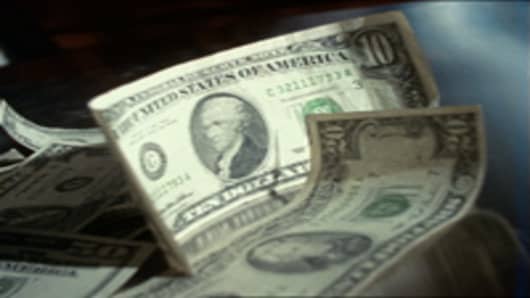This brief respite for the US dollar is most welcome for our trade partners.
However, it's likely to be fleeting if no other changes occur.
The US fiscal deficit remains the major concern for US dollar reserve holders and the situation is not improving.
Granted, the peak of new Treasury issuance occurred in August.
However, there is no sign from Washington that spending will be under control any time soon.
- Program Alert: Andrew Busch will appear today onCNBC's The Callat 11:20/AM
This is why you have seen this week US Treasury Secretary Geithner and Federal Reserve Chairman Ben Bernanke all warn that the US fiscal deficit must come down or risk disaster. They know that the US dollar is weakening due to this red ink. 2009 fiscal deficit was an astounding $1.4 trillion as spending increased from $3.0 trillion to $3.5 trillion while tax revenue fell from $2.5 trillion to $2.1 trillion. The debt is now at $12 trillion and is expected to grow by another $9 trillion over the next decade.
Without any changes to health care, the CBO estimates spending for Medicaid and Medicare is expected to grow $700 billion over the next decade. With health care legislation conservatively estimated to add another $900 billion to the deficit, the numbers are spiraling out of control. Actually that phrase doesn't do the situation justice. Maybe the trailer for the movie 2012 is more appropriate.
Most disturbing is the combined level of federal, state, and local government spending.
According to the OECD, this totals up to 42% of U.S. gross domestic product.
Think about it: 4 out of every 10 dollars of everything produce in this country is channeled through governments.
Quick poll: who thinks this is the most efficient way to run an economy?
The point is that the US has embarked on a glide path of spending that is making the currency weak and US dollar reserve holders knees weak, too. The Federal Reserve appears to be the only one left in the government who can do something about it by raising rates. With unemployment expected to continue upwards, this is not expected to happen soon.
This means that in the short term, the only change to the downward direction for the US dollar has to come from outside the country. So far, Brazil and Canada have acted. In the long term, the US has to act to change spending or rates. Unfortunately, Congress is likely to actually increase spending while the Federal Reserve is unlikely to raise rates.
Therefore, the US dollar is likely to remain weak for a long period of time.
________________________
Andrew B. Busch is Global FX Strategist at BMO Capital Markets, a recognized expert on the world financial markets and how these markets are impacted by political events, and a frequent CNBC contributor. You can comment on his piece and reach him hereand you can follow him on Twitter at http://twitter.com/abusch.



